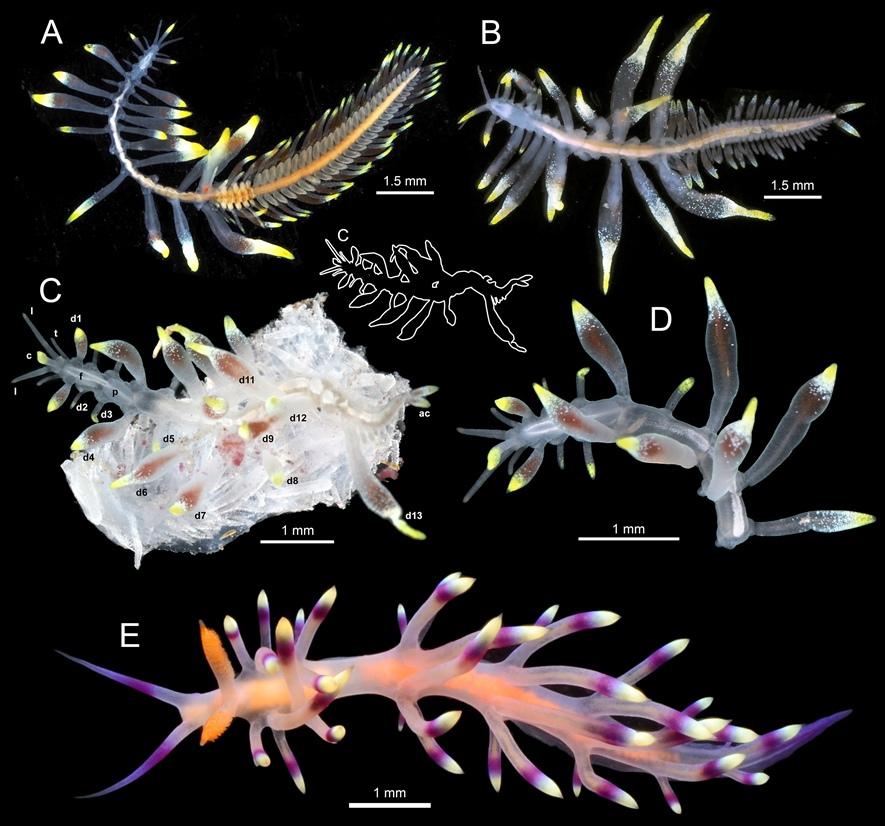
An international team of scientists has discovered a new genus and species of polychaete worms in Vietnam and Japan. This marine worm is very similar in appearance to nudibranchs, which have bright, warning colors. The nudibranchs have stinging capsules in their skin that shoot out at a predator when they try to attack. By mimicking the nudibranch, the worm avoids predators by appearing dangerous, although in fact it has no real protection. This mimicry strategy has been discovered for the first time for the type of annelids, which includes polychaetes. The study was carried out by scientists from Nagoya University (Dr. Naoto Jimi, Japan), Universiti Saïnza (Dr. Sao Pin Wu, Malaysia), the Blanes Advanced Research Centre (Dr. Daniel Martin, CEAB-CSIC, Catalonia, Spain) and the Institute of Ecology and Evolution of the Russian Academy of Sciences (Dr. Temir Britaev, Moscow, Russia). The results have now been published in the journal Scientific Reports.
The publication provides a detailed description of the polychaete, which turned out to be a new genus and species of animals from the Syllidae family. The animal lives in symbiosis with soft corals in the sea waters of Vietnam and Japan and has unique morphological adaptations that are absent in related species of polychaetes. These include a small number of body segments, hook-shaped setae typical of symbiotic polychaetes, but hidden inside parapodia like cat claws, and large spindle-shaped barbs and antennae, brightly colored white and yellow. These features make the polychaete remarkably similar to some species of nudibranchs, with which it lives side by side. By imitating nudibranchs, the polychaete has gained the same advantages, including the ability to avoid being eaten, without having to invest energy in complex defense mechanisms.
🎙“This work combines classical morphological and ecological research methods with molecular analysis, which showed the need to identify a new genus. The researchers chose the name “Cryptochaetosyllis” for the new genus, emphasizing the fact that the bristles characteristic of all polychaetes always remain hidden inside the body of this species (“cryptos” in Greek means hidden), while the species name “imitatio” (imitator in Latin) indicates its mimicry of nudibranch mollusks,” says Temir Alanovich Britayev, Doctor of Biological Sciences, Head of the Laboratory of Morphology and Ecology of Marine Invertebrates at the Institute of Ecology and Evolution of the Russian Academy of Sciences.
Naoto Jimi, Temir A. Britayev, Misato Sako, Sau Pinn Woo, Daniel Martin. A new genus and species of nudibranch-mimicking Syllidae (Annelida, Polychaeta). Scientific Reports volume 14, Article number: 17123 (2024)
https://www.nature.com/articles/s41598-024-66465-4
Pictured: Polychaete Cryptochaetosyllis imitatio (A-D) nudibranch Coryphellina exoptata (photo: Naoto Jimi, O.V. Savinkin and T.I. Antokhina).
